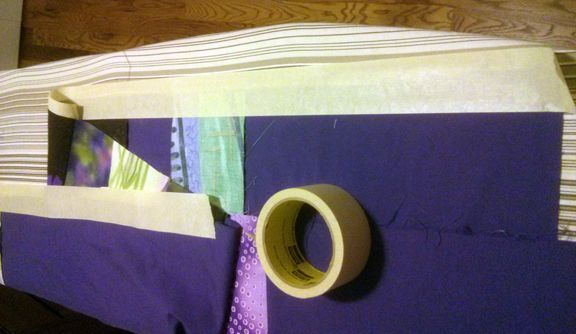5 Free-motion Stitching Tips that Might Surprise You – Quilting Daily

Free-motion machine stitching is a hallmark of contemporary quilting. But, my friends, it does not always come easily. Practice and experience are key, and if you’re like me, you also get by with some help from your expert friends.
 As you can imagine, I know many expert free-motion stitchers. When I have a question on machine quilting techniques, one of my favorite go-to gals is Lyric Kinard, because her approach to free-motion stitching is very thoughtful and design oriented.
As you can imagine, I know many expert free-motion stitchers. When I have a question on machine quilting techniques, one of my favorite go-to gals is Lyric Kinard, because her approach to free-motion stitching is very thoughtful and design oriented.
Lyric walked us through her process on how to use stitch as a design element in a video on our new eMag, Quilting Arts In Stitches Vol. 2, and also shared her 12 tips for free-motion quilting success.
I’m listing five here that might surprise you. I know the first one will elicit some gasps.
Lyric Kinard’s Free-motion Tips
1. Don’t be afraid to adjust your bobbin tension. You can check to see if the tension is right by placing the loaded bobbin case in your hand and lifting the thread. The case should lift but if you give the thread a little jerk it should come back down to your hand. Use the tiny screw driver that came with your machine to turn the screw a quarter turn at a time until it is adjusted to whatever thread you are using.
2. Practice on a charity quilt. Throw together a bunch of scraps or pull out that quilt you started ten years ago and can’t stand the sight of any more. There is someone in a nursing home right now that will greatly appreciate a nice warm lap quilt.
 3. Have a small fabric and batting sandwich by your machine at all times to use as a warm-up and testing cloth. Use it every time you begin to quilt to test your thread tension and to get into the flow of movements that you will be using for your quilt.
3. Have a small fabric and batting sandwich by your machine at all times to use as a warm-up and testing cloth. Use it every time you begin to quilt to test your thread tension and to get into the flow of movements that you will be using for your quilt.
4. Doodle on paper as often as you can. Set your pen down and don’t pick it up until the page is filled with a single line of pseudo-stitching. It is a great way to get your mind in gear for machine quilting and to come up with new designs.
5. Pause the quilt’s movement, but not the needle whenever you change direction. Corners and other directional changes are where tension problems often show up. Just slow down and pause for a heartbeat before you head off in the next direction. The close stitches will relieve some of your tension difficulties.
Lyric has seven more tips, plus a video of her stitch/design process that will entertain and inform you. You can get it all on Quilting Arts In Stitches Vol. 2, with zoom and pause capabilities that let you soak in all the details that make an expert free-motion stitcher.
Which of these tips gave you pause for thought? What tricks have helped your free-motion stitching skills? Share your tips and experience in the comments section below.





Join the Conversation!